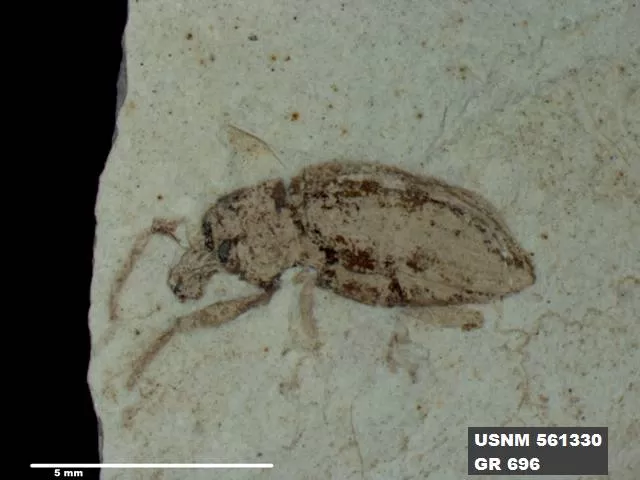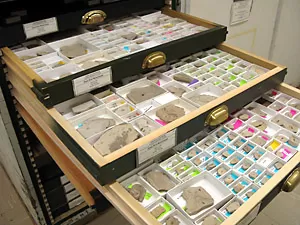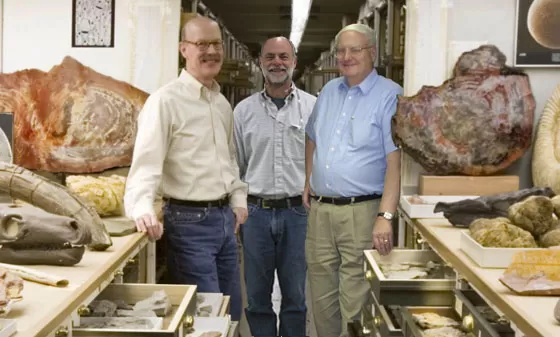Image



The Smithsonian is pleased to house 35,000 fossiliferous rocks collected within the Green River Formation in the states of Colorado and Utah. The age of the Green River Formation is within the Eocene period and these fossils specifically date back to around 50 million years before present. Each rock usually contains an abundance of insects and floral material, primarily leaves. Also found are spiders, downy feathers, flowers, reptiles. A count of all the individual specimens would be over 120,000.
Over 90 percent of the fossils were collected by one person, David Kohls, of Battlement Mesa, Colorado. An amateur paleontologist, and now retired Colorado Mountain College division director, David collected these 35,000 fossils in his spare time throughout the 1990's. Realizing that he couldn't house all these specimens in his home, he started looking for a museum or academic institution who would be interested in receiving them. In 1993, David contacted Conrad Labandeira, curator of fossil arthropods here at the museum, and asked Dr. Labandeira if the Smithsonian would be interested in having them. What impressed Dr. Labandeira the most about this collection is that David didn't throw anything away, as many amateur collectors do, i.e., keep the "pretty" specimens, and toss the rest. This makes for an unbiased collection of specimens, perfect for statistical analysis and research.

In 2009 David received the International Paleontological Society's Harrell L. Strimple Award for his contribution to the study of paleontology.
Throughout the 1990's, Dr. Labandeira, along with his assistant Finnegan Marsh, volunteer and insect enthusiast Louis Pribyl, as well as a host of Smithsonian summer interns, have joined David Kohls on field trips to collect fossils.

Back in Washington, Louis Pribyl undertook the initial reception of the fossils specimens and made a few preliminary inventories of the different insect orders and families present. However, the collection has been primarily organized though the efforts of Finnegan Marsh and his volunteer Robert Schrott.
Robert has spent over 12 years working on these fossils, from unpacking and numbering each specimen, to photography. Over 20 other volunteers have helped Finnegan throughout the years, most recently Dale Greenwalt.

Throughout the years many notable entomology and paleontology scholars have visited and studied the collection: David Grimaldi of the American Natural History Museum, Michael Engel, of the University of Kansas Natural History Museum, Alexander Rasnitsyn of the Russian Paleontological Institute, A.V. Gorochov of the Zoological Institute of the Russian Academy of Sciences, and Peter Vrsansky, of the Slovak Academy of Sciences.
You can browse or search this collection on the Paleo Department's Collections Search page. Click on the "Search by Field" tab, then click on the "Collection" tab, and under "Collection Name" select "David Kohls Green River Collection."